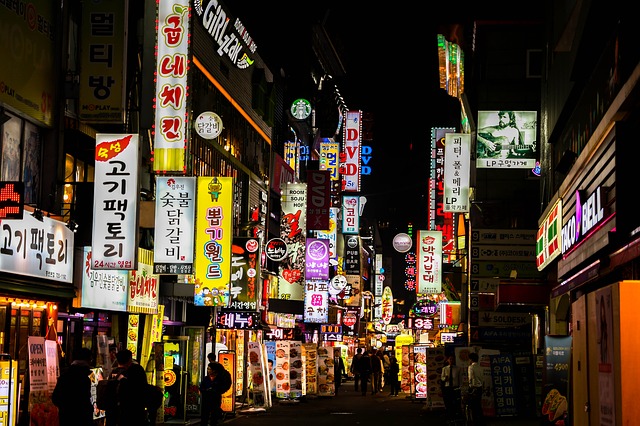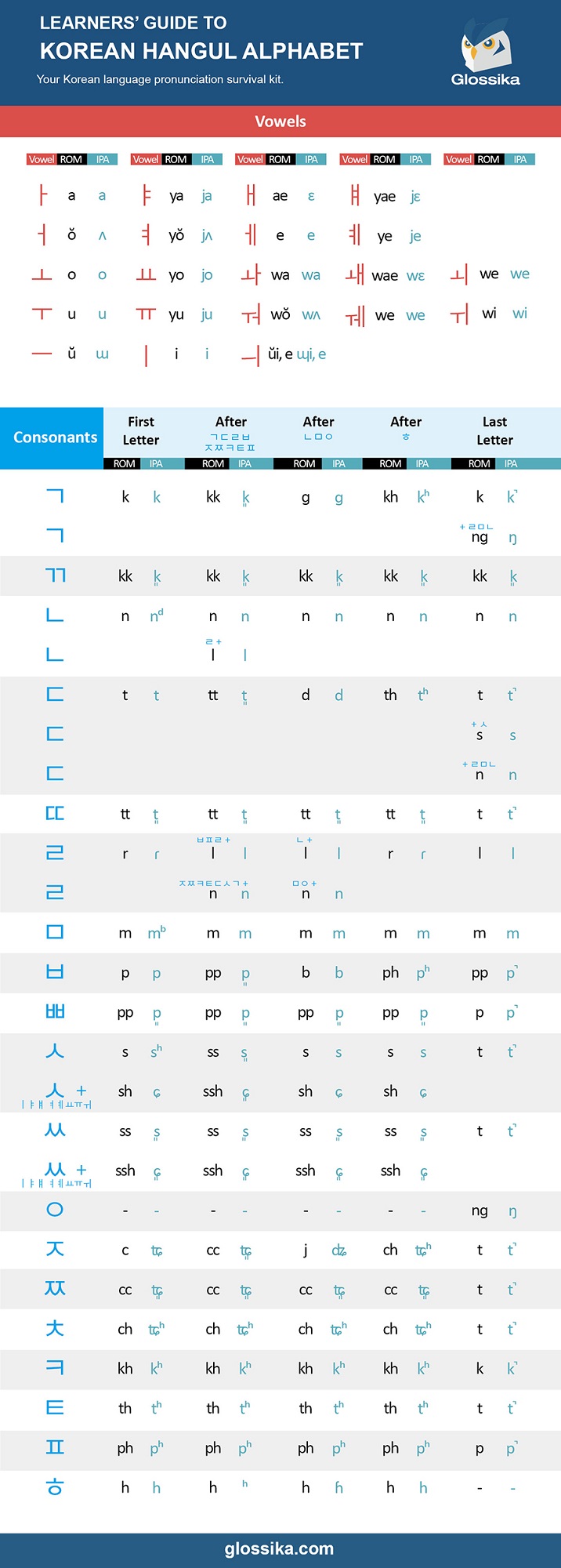How to Speak the Korean Language for Beginners
For complete beginners, learning how to read and speak Korean fluently can not only be a challenge, it can also be quite intimidating. With a completely different alphabet, writing system, grammar, and pronunciation from English, Korean requires you to truly learn the language from the ground up. However, as long as you are able to develop a solid foundation for future training in order to continually build on what you've learned, you'll be surprised to find that you too, can learn Korean much faster and more effectively than you thought. With our new video, Glossika Intro Series - Learn the Basics of Korean, on the Glossika YouTube channel, you can build a strong foundation that will help you learn to read and speak Korean with much more ease as we walk you through the steps for breaking through your learning plateau.
Despite having received a huge amount of foreign influence from China since ancient times, and more recently the United States, Korea has impressively preserved much of its unique culture and identity to this day. On your next trip to Korea, you'll definitely want to make sure you visit some of the temples, museums, towers, islands, palaces, amusements parks, villages, markets, department stores, shopping malls, and more in order to experience the brilliance of Korean scenery, tourist attractions, and culture in full.
The appeal of Korea's unique culture has gained momentum in many different countries all over the world. This phenomenon has been coined Hallyu (한류) or the Korean Wave. The Korean Wave has primarily been propagated by the mass increase in popularity in K-pop, or Korean pop music and K-drama, or Korean drama consisting of various TV series and soap opera shows.

Introducing the Korean Language
Similar to Japanese, Korean does not have any clear-cut relation or association with any other language family. It is widely believed among linguists however, that Korean belongs to the Altaic language family along with Japanese. Even this remains a subject of controversy within the linguist community. At the end of the day, there is still no definitive answer as to where the Korean language originated from.
What we do know is that a large portion of Korean words and vocabulary we see today are derived from Chinese characters (referred to in Korean as hanja). Up until the 5th century, Koreans were writing in the Classical Chinese script. It wasn't until later that three derivative writing systems known as Hyangchal (향찰), Idu (이두), and Gugyeol (구결) appeared. These now-archaic writing systems were developed in order to facilitate writing Korean from hanja. So if you've ever learned any Chinese, you'll probably notice from numerous vocabulary terms that Korean and Chinese share quite a bit in common.
Idu uses hanja and special symbols to represent the Korean language and various aspects of Korean phonology. While there are unique distinctions, Hyangchal and Gugyeol are considered to be subsets of Idu. While Idu was mainly used for indicating verb endings and other elements of Korean grammatical structures, Hyangchal was used primarily for writing hyangga, or vernacular poetry. Hyangga are written as four, eight, or ten line poems going from top to bottom and are organized into three sections of four, four, and two lines. Idu and Hyangchal both transcribed sounds of the Korean language into hanja. Gugyoel, on the other hand, uses special symbols along with some hanja as a guideline to help Koreans better understand Chinese grammar, and should be distinctly separated from the other two.

Overview of the Korean Alphabet
In 1444, the Korean alphabet was created to denote the correct sounds for the language. In so doing, the consonants were modeled after the shapes the mouth makes in spoken Korean. Traditionally, Korean writing has always gone from right to left in vertical columns just like Chinese and Japanese. It wasn't until the 1980s that Koreans started writing in the left to right direction in horizontal lines.
In total, there are 24 letters in the Korean alphabet, consisting of 14 consonants and 10 vowels. These letters come together in a block structure or format to build a single character. Below, you'll find a few examples of how letters are combined in a left to right, top to bottom direction to form individual characters. Mastering this concept is the most fundamental step for beginners to learn how to speak the Korean language. Our introduction video on Korean will further expand on this so you can progress with your learning quickly and smoothly.
- ㄴ (n) + ㅕ (yŏ) + ㄴ (n) = 년 (nyeon) meaning year.
- ㅇ (no sound) + ㅣ (i) + ㄹ (l) = 일 (il) meaning one.
- ㅁ (m) + ㅜ (u) + ㄹ (l) = 물 (mul) meaning water.
- ㅅ (s) + ㅗ (o) + ㄴ (n) = 손 (son) meaning hand.
- ㅇ (no sound) + ㅙ (wae) = 왜 (wae) meaning why.
These are just some examples of how letters of the Korean alphabet work together to create different characters, each with their own unique meanings. Below, you'll find a comprehensive infographic covering all the vowels and consonants in the Korean language. These letters are organized into Korean, romanization, and IPA columns to give you a good idea of how certain letters and pronunciations are associated with each other. Our Korean infographic will even go in-depth into unique rules that vary depending on certain character compositions.

Essential Korean Phrases
Just like Japanese, Korean is a language that is very focused around the use of honorifics and suffixes that change depending on who you're talking to and your relationship with that person. For this reason, learning how to speak Korean can often be a daunting task for beginners who don't have prior experience with the language. But don't worry! We've made a chart of essential Korean phrases that you can use in your travels to avoid sounding rude or impolite.
| English | Korean | Romanization |
|---|---|---|
| Hello. | 안녕하세요. | annyeonghaseyo |
| How are you? | 안녕하십니까? | annyeonghasibnikka? |
| Nice to meet you. | 만나서 반갑습니다. | mannaseo bangabseubnida. |
| Sorry. | 미안합니다. | mianhabnida. |
| Excuse me. | 실례합니다. | sillyehabnida. |
| That's okay. | 괜찮습니다. | gwaenchanhseubnida. |
| Please help out. | 도와 주세요. | dowa juseyo. |
| Thanks for your help. | 도와 주셔서 감사합니다. | dowa jusyeoseo gamsahabnida. |
| [I] don't know. | 모르겠습니다. | moleugessseubnida. |
| [I] know. | 알겠습니다. | algessseubnida. |
| Please say it again slowly. | 다시 한번 천천히 말씀해 주세요. | dasi hanbeon cheoncheonhi malsseumhae juseyo. |
| Please wait a moment. | 잠깐만 기다려 주십시오. | jamkkanman gidalyeo jusibsio. |
| I don't speak Korean well. | 한국말 잘 못합니다. | hangugmal jal moshabnida. |
| I don't understand. | 못 알아듣겠는데요. | mos al-adeudgessneundeyo. |
| I don't know how to say it. | 어떻게 말해야 좋을지 모르겠어요. | eotteohge malhaeya joh-eulji moleugess-eoyo. |
| Where is it? | 어디예요? | eodiyeyo? |
| Where is this (here)? | 여기가 어디에요? | yeogiga eodieyo? |
| When? | 언제예요? | eonjeyeyo? |
| How? | 어떻게요? | eotteohgeyo? |
| How much? | 얼마예요? | eolma-eyo? |
| What's wrong? | 왜 그래요? | wae geulaeyo? |
| What time is it now? | 지금 몇 시예요? | jigeum myeoch siyeyo? |
| What is this? | 이것이 뭡니까? | igeos-i mwobnikka? |
| This is my first time here. | 저는 이곳이 처음입니다. | jeoneun igos-i cheoeum-ibnida. |
| I've come here before. | 전에 와 본 적이 있습니다. | jeon-e wa bon jeog-i issseubnida. |
| Please write it down here. | 여기에 써 주세요. | yeogie sseo juseyo. |
| Thank you for your hospitality. | 초대해 주셔서 감사합니다. | chodaehae jusyeoseo gamsahabnida. |
| Sorry to keep you waiting. | 오래 기다리게 해서 정말 죄송합니다. | olae gidalige haeseo jeongmal joesonghabnida. |
| Of course, it's all right. | 당연히 괜찮지요. | dang-yeonhi gwaenchanhjiyo. |
| No problem. | 문제 없어요. | munje eobs-eoyo. |
| Fighting! (words of encouragement). | 화이팅! | hwaiting! |
On your next trip to Korea, equip yourself with some of the above phrases and not only will the locals be surprised at how much of their language you know, you'll find that you will actually be able to get around quite adequately. These survival phrases are all in the polite form so you don't have to worry about possibly offending anyone.
Sign up on Glossika and get a 7-day free access:




